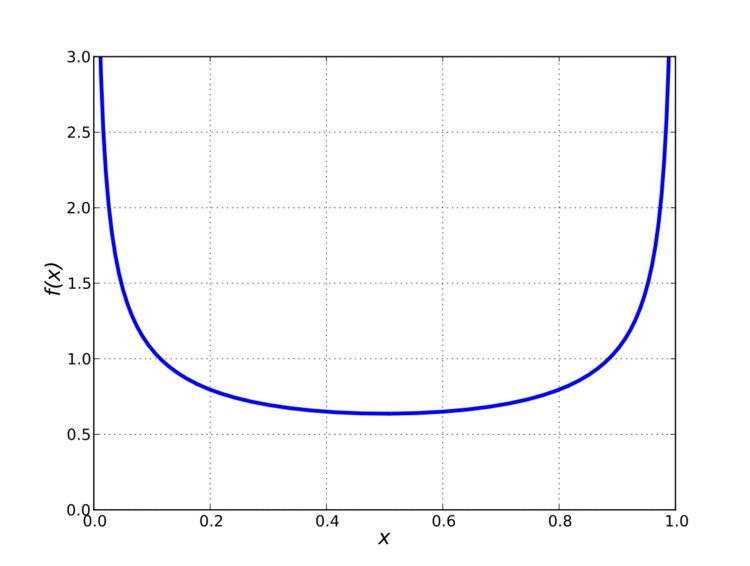Parameters none | ||
 | ||
Support x ∈ [ 0 , 1 ] {\displaystyle x\in [0,1]} PDF f ( x ) = 1 π x ( 1 − x ) {\displaystyle f(x)={\frac {1}{\pi {\sqrt {x(1-x)}}}}} CDF F ( x ) = 2 π arcsin ( x ) {\displaystyle F(x)={\frac {2}{\pi }}\arcsin \left({\sqrt {x}}\right)} Mean 1 2 {\displaystyle {\frac {1}{2}}} Median 1 2 {\displaystyle {\frac {1}{2}}} | ||
In probability theory, the arcsine distribution is the probability distribution whose cumulative distribution function is
Contents
for 0 ≤ x ≤ 1, and whose probability density function is
on (0, 1). The standard arcsine distribution is a special case of the beta distribution with α = β = 1/2. That is, if
The arcsine distribution appears
Arbitrary bounded support
The distribution can be expanded to include any bounded support from a ≤ x ≤ b by a simple transformation
for a ≤ x ≤ b, and whose probability density function is
on (a, b).
Shape factor
The generalized standard arcsine distribution on (0,1) with probability density function
is also a special case of the beta distribution with parameters
Note that when
Properties
Differential equation
